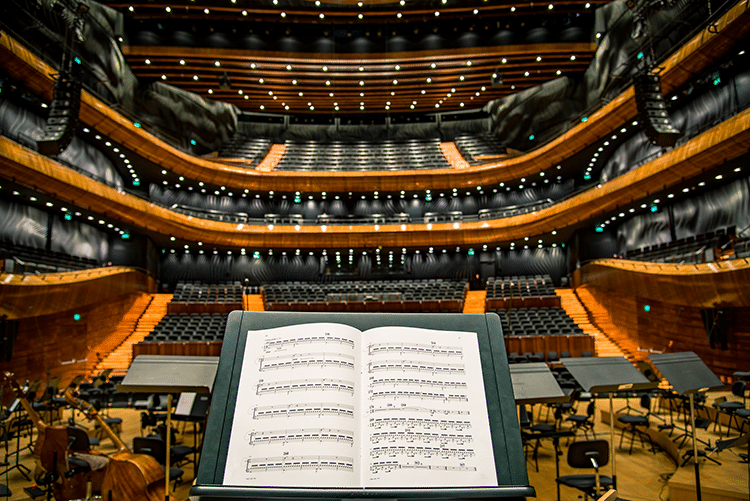Catering to luxury travelers requires a keen awareness of their wants and needs – and increasingly, what they want is authenticity, unique experiences, and adventure. If that sounds a lot like what Millennials want, there’s a reason for that: nearly a quarter of U.S. adults making over $500,000 annually are millennials, and more of them want to travel than any other generation. Appealing to one group often means appealing to both.
And luxury travelers are worth courting. According to a recent report from Amadeus, luxury travel growth is outpacing the growth of overall travel, and that disparity is only going to keep growing.
Here are 6 key trends to consider when planning experiences for luxury travelers:
1. Luxury as a 4-letter word.
Glamping (or luxury camping) might have been novel a few years ago, but today its shine has become a bit tarnished. In general, the idea of seeking out luxury is on a downswing.
Some luxury travelers may want the comforts of home at hand when they’re roughing it, but for many, authenticity is much more novel. Labeling your tours as luxury experiences or glamorous excursions may repel the exact customers you’re trying to attract. Instead, highlight the elements that speak to luxury travelers, like authenticity, adventure, uniqueness, and scarcity — and get your tours in front of the people responsible for their travel arrangements.
2. Travel agents for the wealthy.
Travel agencies have struggled with the rise of online bookings as more and more customers can plan trips without any outside help. Some agents are thriving, though: the ones who serve the wealthy.
When money is no object, searching the Internet for the best deal is a waste of valuable time. Instead, the super rich want the best experience, and they want someone they trust to secure it for them. Travel designers handle complex arrangements, ensure their clients book only the best, and step in to resolve any crises that crop up. They also tend to be well-traveled, as wealthy clients want personal recommendations. The travel agency model may be dying for the average tourist, but it’s back in full swing for the wealthy.
3. Globe-trotters under 12
When you think of luxury travelers, you probably picture an adventurous individual or couple – not a family with their children in tow. But for affluent parents, child care is so easily obtained that travelling without children is an everyday experience. In fact, in a survey of affluent people in 10 countries, 90 percent considered travelling as a family to be a genuine luxury.
World schooling is also a growing trend. Parents who can afford to take their children travelling are offering them global educations, home-schooling with the help of dozens of cultures. With Millennials moving into the age of parenthood, we can expect to see this happen more often.
So if you’re developing tours for luxury travelers, remember to consider the needs of families. Offering family-friendly experiences is one way to increase bookings and customer satisfaction. If that’s not possible, consider working with local high-end child care providers to offer families an alternative. All the better if those providers also offer authentic, educational experiences for the little ones.
4. The rise of wellness travel
In most regions where wellness travel or medical tourism is popular, it’s popular with the wealthy. After all, not everyone can afford to travel to seek the very best care. To capitalize on this trend, tour providers are incorporating health-promoting elements into their tours, like spa stops, yoga breaks, and clean-eating options. Providers who cater to wellness tourists also need to make extra considerations for accessibility, as their customers may be recovering from or preparing for procedures.
For more on wellness travel, check out our article on joining the medical tourism market.
5. The luxury of solitude
Skift recently identified isolation as the next big thing in luxury travel, and with good reason. The world has gotten smaller. Travel is more affordable and more accessible than ever. With people exploring every square inch of the globe, it’s almost impossible to be alone when you travel — and that’s why luxury travelers crave it. There’s nothing so prized as the chance to find solace, solitude and silence.
“Fogo Island Inn proudly boasts about “miles and miles of blissful nothingness” in its marketing material. Finland taps into the rising demand for isolation and quiet with its Silence, Please tourism campaign, perhaps inspired by research being done at the University of Eastern Finland. For more than a decade, academics at UEF have been studying ways to make silence a tourism asset in sparsely-populated areas.
Aman’s Fasel sums it up. “Properties situated in locations that are often quite remote afford a sense of escapism, calm and serenity, …often much sought after with today’s fast-paced life. As a result, our guests are truly able to switch off and let the beauty of their surroundings relax their minds.””
If you can offer guests that sort of solitude, highlight it at every opportunity.
6. The hunt for originality
For some luxury travelers, scarcity is just the beginning. A once-in-a-lifetime opportunity sounds scare, but it could well be experienced by 7.5 billion people, if only one time each. Truly unique opportunities should be once in a world of lifetimes.
World Travel Market recently sat down with Philippe Brown, founder of Brown + Hudson, a London-based luxury travel consultancy. Brown identified a few of the opportunities they’ve arranged for their clients, including a private dinner with Desmond Tutu and the chance to play a grand piano on stage at Reykjavik’s Harpa Concert Hall.
“This is what Bespoke 2.0 is all about,” said Brown. “It’s the essence of personal. Everything is possible. If it doesn’t exist, we create it, If it hasn’t been done, then it’s time someone did.”
But originality doesn’t have to be quite that extreme. If you’re open to creating customized, private tours, working with local artisans, or finding creative opportunities, you can cater to those desires. Anything that can be Googled is too pedestrian, so expect to make heavy use of private listings.
Curious about the travel habits of the highly affluent? Our infographic has more.








